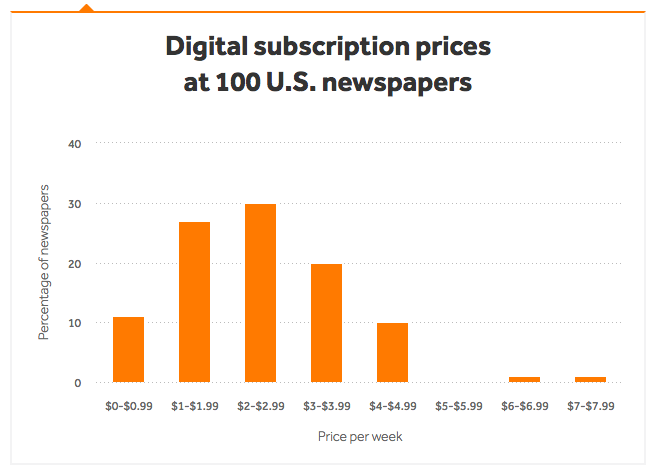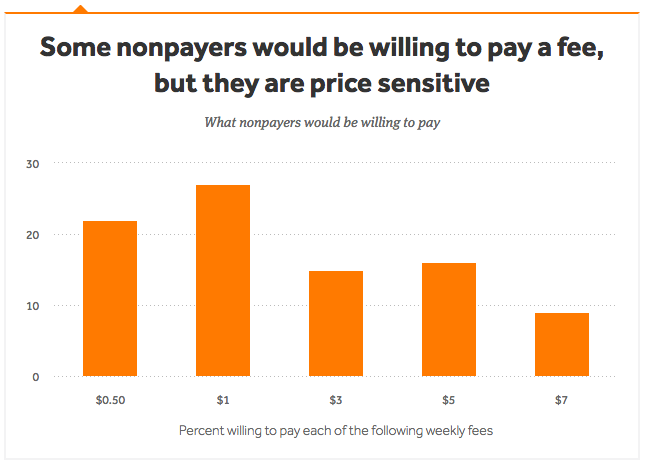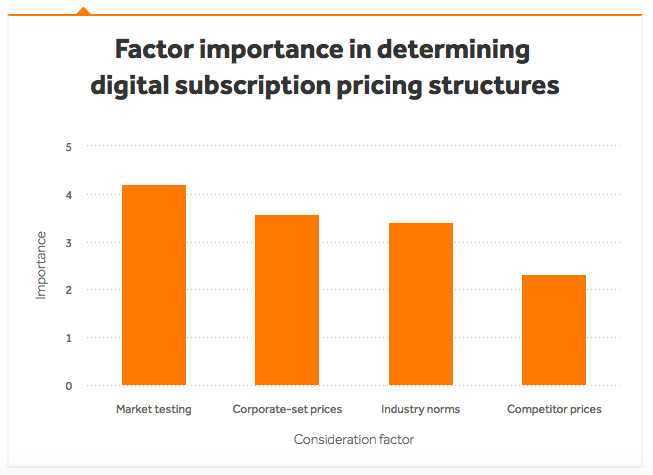
After two decades of publishers giving their content away for free, many are coming around to the idea that they should charge for it. The question is: How much?
Digital consumer revenue is expected to become a bigger share of news publishers’ revenue over the next few years, but many publishers are still charging more than a lot of people are willing to pay. Here are five charts that show how — and why — news publishers are pricing their digital content.
Less than a latte …
In 2012, the Reynolds Journalism Institute concluded that the optimal price for a digital news subscription was about $1.25 per week. Data compiled by the American Press Institute finds that the median price of digital news subscriptions in 2017 was nearly twice that, at $2.31.

… but more than many people are willing to spend
People who pay for news think differently from those who don’t. Research published last spring by the Media Insight Project found that nearly half — 49 percent — of survey respondents said they’d be willing to spend $1 or less per week for digital news.

Undervalued?
Those paying for a subscription, however, appear to be happy with the value they get for their money. More than four-fifths of respondents to the same Media Insight Project survey said they thought their news subscriptions delivered “fair” or “good” value for the price, and fewer than one-fifth thought their subscriptions were somewhat overpriced.
What the market will bear
The same American Press Institute survey found that newspaper publishers put more importance on market testing than on competitors’ prices when determining the price of their digital subscriptions.

Measuring up
The median price of a digital newspaper subscription is around $10 per month. That’s the same or slightly cheaper than leading audio content subscriptions, including Spotify and Audible, but it is more expensive than the asking price for many subscription video content products, including both mass-market offerings such as Netflix and specialty products such as Crunchyroll.
More in Media

Why some publishers aren’t ready to monetize generative AI chatbots with ads yet
Monetization of generative AI chatbot experiences is slow going. Some publishing execs said they’re not ready to add advertising to these products until they scale or can build a subscription model first.

Media Briefing: Publishers who bet on events and franchises this year are reaping the rewards
Tentpole events and franchises are helping publishers lock in advertising revenue.

With Firefly Image 3, Adobe aims to integrate more AI tools for various apps
New tools let people make images in seconds, create image backgrounds, replacing parts of an image and use reference images to create with AI.








